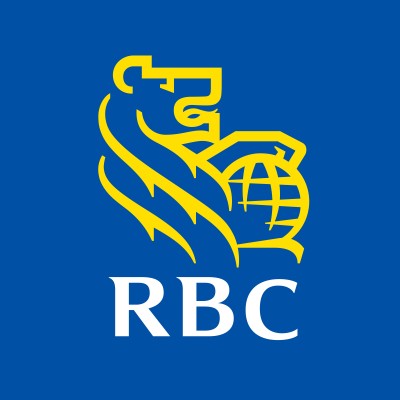Navigating the Transition: RBC's Shift from LIBOR to SOFR
October 28, 2024, 11:11 pm

Location: United Kingdom, England, City of London
Employees: 10001+
Total raised: $2.9B
The financial world is undergoing a seismic shift. The Royal Bank of Canada (RBC) is at the forefront of this change, announcing significant updates regarding its floating rate notes and debentures. As the curtain falls on the London Interbank Offered Rate (LIBOR), RBC is steering its ship toward the Secured Overnight Financing Rate (SOFR). This transition is not just a technical adjustment; it’s a fundamental change in how interest rates are determined.
LIBOR has long been the bedrock of global finance. It served as a reference rate for trillions of dollars in financial products. However, the rate's reliability has been questioned. Scandals and manipulation allegations have tarnished its reputation. As a result, regulators worldwide have pushed for a more transparent and robust alternative. Enter SOFR, a rate based on actual transactions in the U.S. Treasury repurchase market. It promises greater accuracy and less susceptibility to manipulation.
On October 25, 2024, RBC issued notices to its noteholders and debentureholders, detailing the changes. The bank's floating rate notes, amounting to USD 20 million and due in March 2029, will now reference compounded SOFR. This change will take effect for interest periods starting in December 2024. An adjustment spread of 0.26161% will be added to the SOFR rate to determine the interest on these notes. This adjustment is crucial. It ensures that the transition from LIBOR to SOFR does not disadvantage investors.
Similarly, RBC's USD 300 million floating rate debenture notes, maturing in 2085, will also adopt SOFR as their reference rate. The bank has consulted with independent advisers to ensure a smooth transition. The new rate, termed the Spread-Adjusted USD Compounded SOFR Index Rate, will replace the previous LIBOR-based calculations. This new formula incorporates both the compounded SOFR and an adjustment spread, maintaining the integrity of the interest calculations.
The implications of these changes are profound. For investors, the shift to SOFR means adapting to a new landscape. SOFR is a backward-looking rate, calculated based on the previous days' transactions. This contrasts with LIBOR, which was forward-looking and often set based on estimates. Investors will need to recalibrate their expectations and strategies. The new calculations may lead to fluctuations in interest payments, impacting cash flow projections.
RBC has taken steps to mitigate confusion. The bank has provided detailed explanations of the new terms and conditions. The notices include links to supplementary documents, ensuring that all stakeholders have access to the necessary information. Transparency is key in this transition. By clearly outlining the changes, RBC aims to build trust and confidence among its investors.
However, the transition is not without challenges. The financial markets are in a state of flux. Many institutions are grappling with the implications of moving away from LIBOR. The transition to SOFR is not just a matter of changing rates; it involves rethinking risk management strategies, pricing models, and operational processes. Financial institutions must invest in new systems and training to accommodate these changes.
Moreover, the market's reaction to SOFR has been mixed. While some welcome the shift to a more transparent rate, others express concerns about its volatility. SOFR can fluctuate significantly based on market conditions, leading to unpredictability in interest payments. This uncertainty can create challenges for borrowers and lenders alike.
RBC's proactive approach is commendable. By consulting with independent advisers and providing clear communication, the bank is positioning itself as a leader in this transition. The financial institution's commitment to innovation and transparency is evident. It recognizes that navigating this change requires not just technical adjustments but also a cultural shift within the organization.
As the financial landscape evolves, RBC is not alone. Other banks and financial institutions are also making similar transitions. The shift from LIBOR to SOFR is a collective movement. It reflects a broader trend toward greater transparency and accountability in financial markets. This transition is a necessary step in restoring trust in the financial system.
In conclusion, RBC's announcement marks a pivotal moment in the financial world. The transition from LIBOR to SOFR is not merely a change in rates; it represents a fundamental shift in how interest rates are determined. As RBC leads the charge, investors and institutions must adapt to this new reality. The road ahead may be rocky, but with clear communication and a commitment to transparency, the journey can be navigated successfully. The financial landscape is changing, and those who embrace it will thrive in the new era of finance.
LIBOR has long been the bedrock of global finance. It served as a reference rate for trillions of dollars in financial products. However, the rate's reliability has been questioned. Scandals and manipulation allegations have tarnished its reputation. As a result, regulators worldwide have pushed for a more transparent and robust alternative. Enter SOFR, a rate based on actual transactions in the U.S. Treasury repurchase market. It promises greater accuracy and less susceptibility to manipulation.
On October 25, 2024, RBC issued notices to its noteholders and debentureholders, detailing the changes. The bank's floating rate notes, amounting to USD 20 million and due in March 2029, will now reference compounded SOFR. This change will take effect for interest periods starting in December 2024. An adjustment spread of 0.26161% will be added to the SOFR rate to determine the interest on these notes. This adjustment is crucial. It ensures that the transition from LIBOR to SOFR does not disadvantage investors.
Similarly, RBC's USD 300 million floating rate debenture notes, maturing in 2085, will also adopt SOFR as their reference rate. The bank has consulted with independent advisers to ensure a smooth transition. The new rate, termed the Spread-Adjusted USD Compounded SOFR Index Rate, will replace the previous LIBOR-based calculations. This new formula incorporates both the compounded SOFR and an adjustment spread, maintaining the integrity of the interest calculations.
The implications of these changes are profound. For investors, the shift to SOFR means adapting to a new landscape. SOFR is a backward-looking rate, calculated based on the previous days' transactions. This contrasts with LIBOR, which was forward-looking and often set based on estimates. Investors will need to recalibrate their expectations and strategies. The new calculations may lead to fluctuations in interest payments, impacting cash flow projections.
RBC has taken steps to mitigate confusion. The bank has provided detailed explanations of the new terms and conditions. The notices include links to supplementary documents, ensuring that all stakeholders have access to the necessary information. Transparency is key in this transition. By clearly outlining the changes, RBC aims to build trust and confidence among its investors.
However, the transition is not without challenges. The financial markets are in a state of flux. Many institutions are grappling with the implications of moving away from LIBOR. The transition to SOFR is not just a matter of changing rates; it involves rethinking risk management strategies, pricing models, and operational processes. Financial institutions must invest in new systems and training to accommodate these changes.
Moreover, the market's reaction to SOFR has been mixed. While some welcome the shift to a more transparent rate, others express concerns about its volatility. SOFR can fluctuate significantly based on market conditions, leading to unpredictability in interest payments. This uncertainty can create challenges for borrowers and lenders alike.
RBC's proactive approach is commendable. By consulting with independent advisers and providing clear communication, the bank is positioning itself as a leader in this transition. The financial institution's commitment to innovation and transparency is evident. It recognizes that navigating this change requires not just technical adjustments but also a cultural shift within the organization.
As the financial landscape evolves, RBC is not alone. Other banks and financial institutions are also making similar transitions. The shift from LIBOR to SOFR is a collective movement. It reflects a broader trend toward greater transparency and accountability in financial markets. This transition is a necessary step in restoring trust in the financial system.
In conclusion, RBC's announcement marks a pivotal moment in the financial world. The transition from LIBOR to SOFR is not merely a change in rates; it represents a fundamental shift in how interest rates are determined. As RBC leads the charge, investors and institutions must adapt to this new reality. The road ahead may be rocky, but with clear communication and a commitment to transparency, the journey can be navigated successfully. The financial landscape is changing, and those who embrace it will thrive in the new era of finance.
